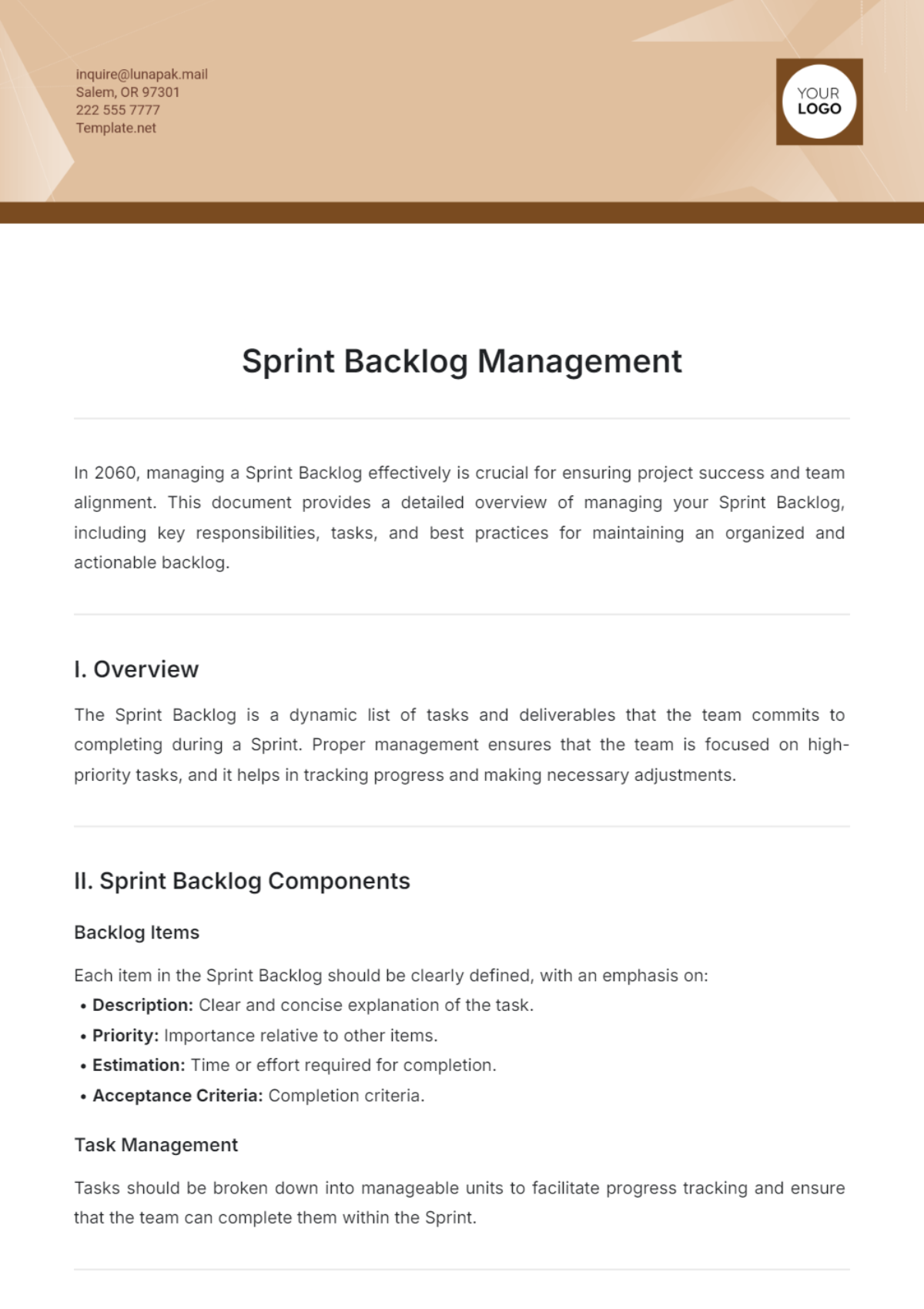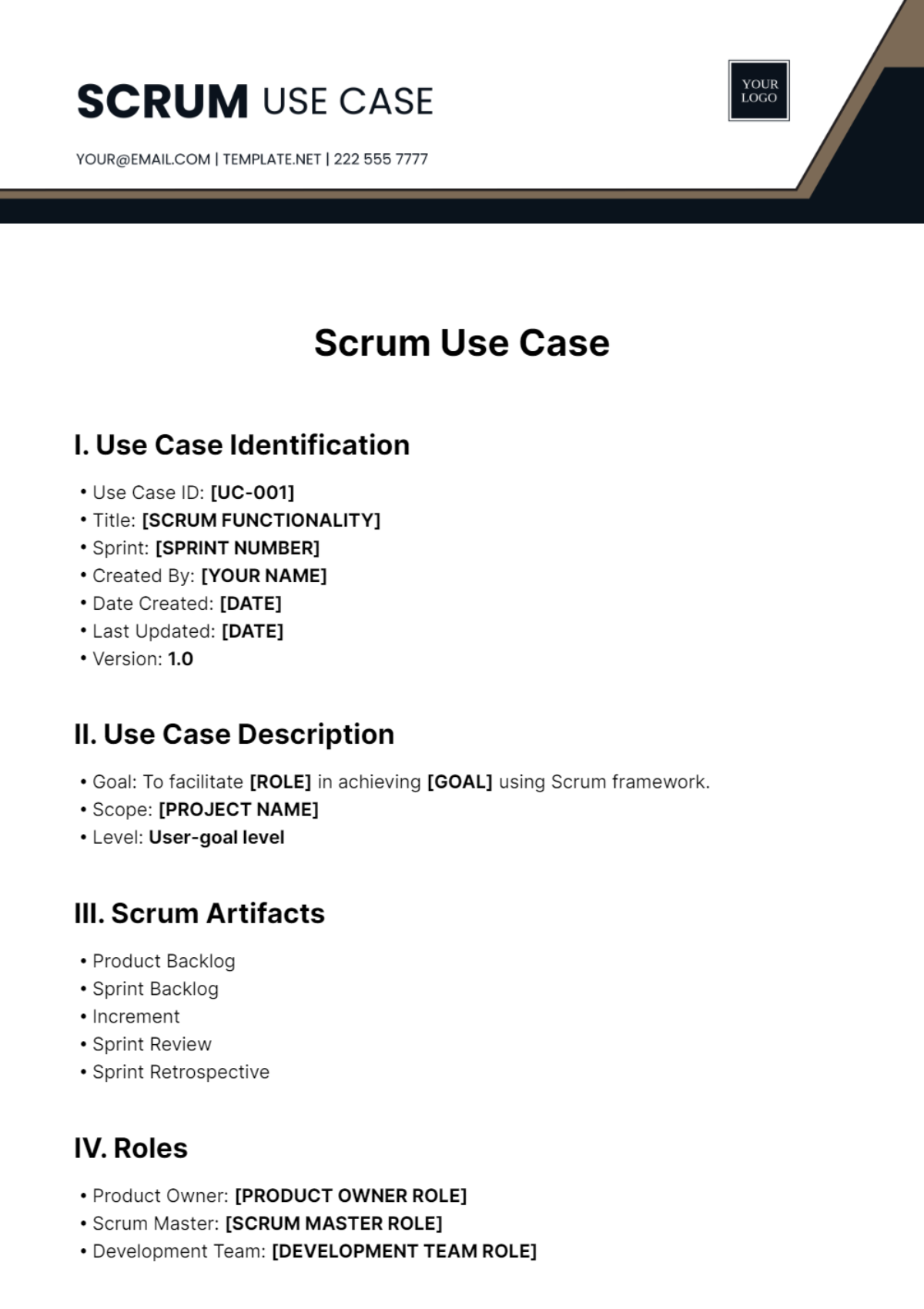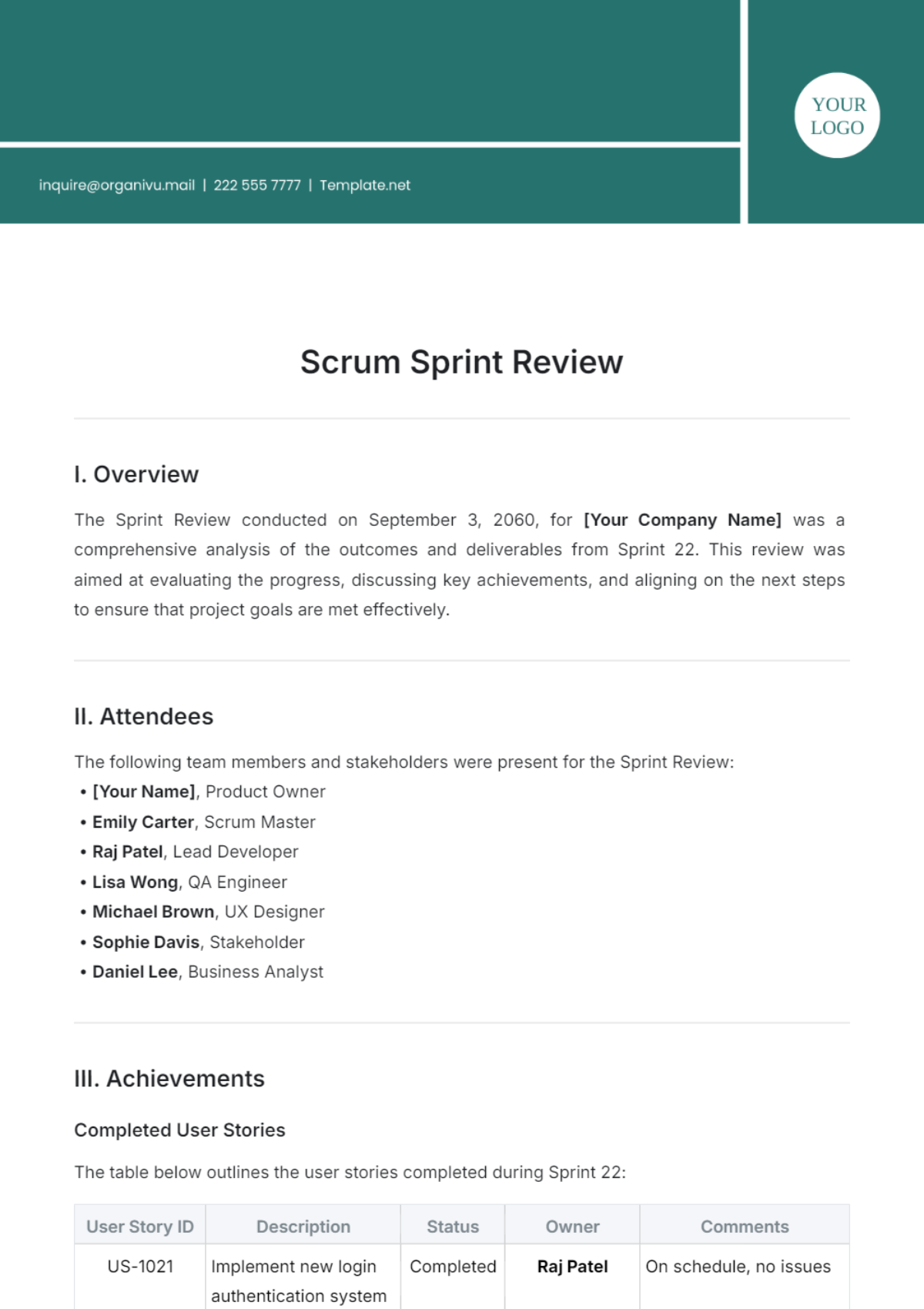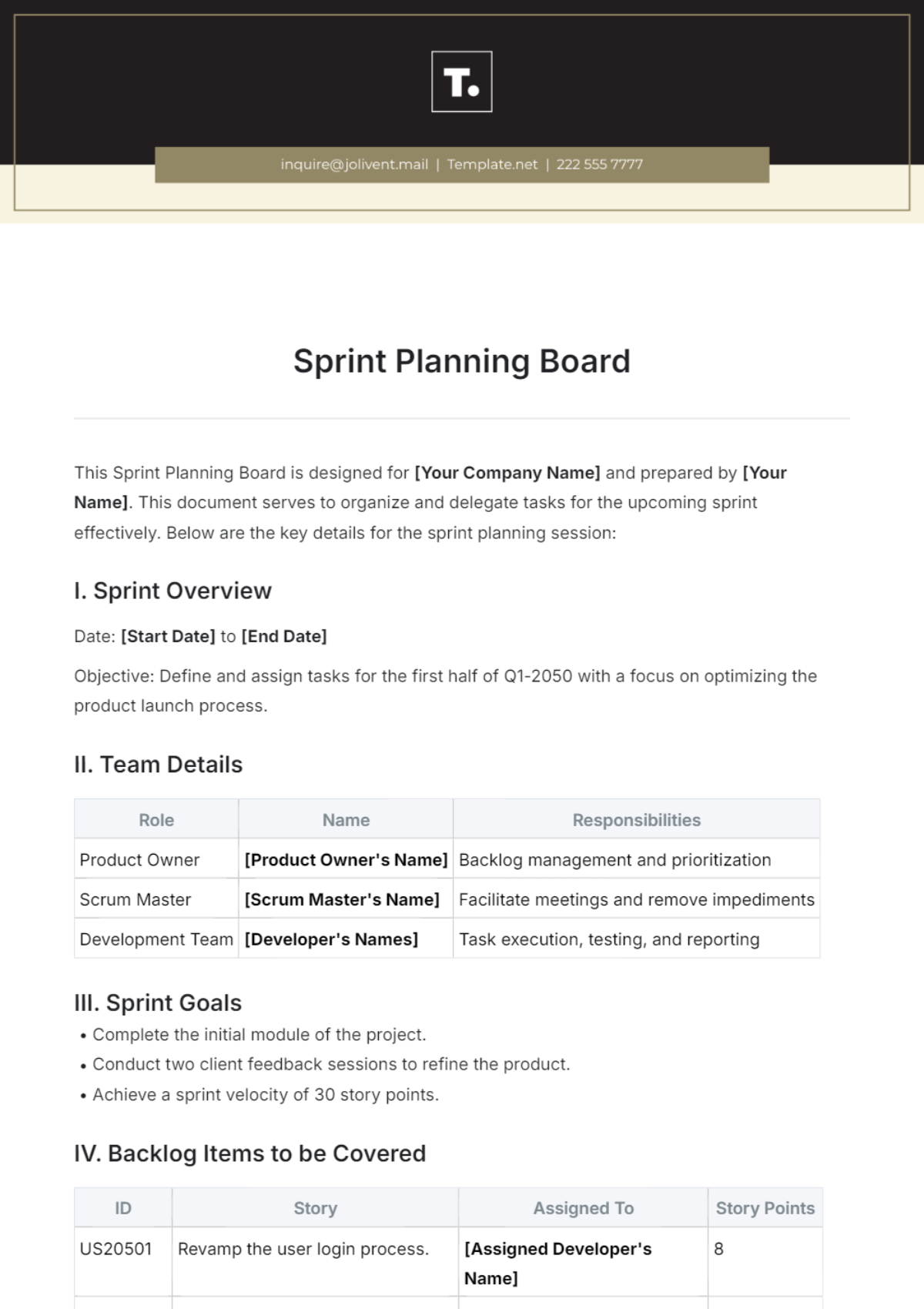Scrum Use Case
I. Use Case Identification
Use Case ID: [UC-001]
Title: [SCRUM FUNCTIONALITY]
Sprint: [SPRINT NUMBER]
Created By: [YOUR NAME]
Date Created: [DATE]
Last Updated: [DATE]
Version: 1.0
II. Use Case Description
Goal: To facilitate [ROLE] in achieving [GOAL] using Scrum framework.
Scope: [PROJECT NAME]
Level: User-goal level
III. Scrum Artifacts
Product Backlog
Sprint Backlog
Increment
Sprint Review
Sprint Retrospective
IV. Roles
Product Owner: [PRODUCT OWNER ROLE]
Scrum Master: [SCRUM MASTER ROLE]
Development Team: [DEVELOPMENT TEAM ROLE]
V. Preconditions
Product Backlog is populated and prioritized.
Sprint Planning is completed for the current sprint.
VI. Acceptance Criteria
CRITERIA 1: [DESCRIPTION]
CRITERIA 2: [DESCRIPTION]
VII. Postconditions
Sprint goals are met.
Deliverables are reviewed and accepted.
VIII. Main Success Scenario (Basic Flow)
Product Owner prioritizes items in the Product Backlog.
Development Team selects items for the Sprint Backlog during Sprint Planning.
Daily Stand-ups are conducted to discuss progress.
Sprint Review is held to demonstrate completed work.
Sprint Retrospective identifies areas for improvement.
IX. Extensions (Alternative Flows)
3a. If an item cannot be completed during the sprint:
The reason is communicated during the Daily Stand-up.
The item is re-prioritized or moved to the next sprint.
X. Special Requirements
Timeboxing: Sprints are timeboxed to [X WEEKS].
Collaboration: Daily communication and collaboration are essential.
XI. Assumptions
Team members are familiar with Scrum principles.
Scrum tools and boards are utilized for tracking.
XII. Frequency of Use
Sprints are conducted [X TIMES] per [WEEK/MONTH].
XIII. Miscellaneous
Tools Used: [SCRUM TOOLS]
Notes: Additional comments or considerations related to Scrum practices.




